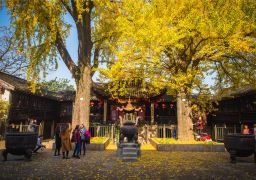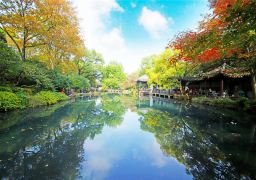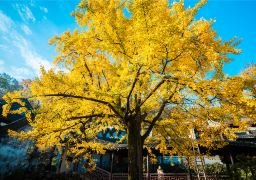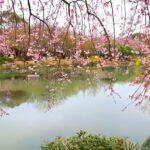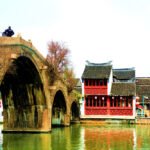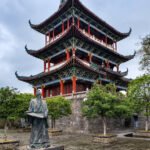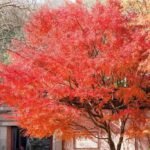The Huishan Ancient Town scenic area is located to the north of Wuxi Xihui Park. It is formed by the merger of the original Xihui Park (Xihui Scenic Area) and Huishan historical and cultural block. Functionally, it is divided into four tourist areas: cultural relics and historic sites area, Xihui scenic area, historical and cultural block, and mountain forest protection area. The scenic area covers an area of 3.5 square kilometers, of which the core area is 1.09 square kilometers. Xihui Park (Xihui Scenic Area) is a national key park, also known as Xihui scenic area and a national key scenic spot. Huishan historical and cultural block is a historical and cultural block at the municipal level in Wuxi. Huishan Old Street has been named as a famous historical and cultural street in China. Huishan ancestral hall group is on the tentative list of China’s world cultural heritage. The ancestral hall complex was built in the Tang Dynasty and flourished in the Ming and Qing Dynasties. Most of the ones we see now are ancestral halls from the Qing Dynasty. These ancestral halls involve more than 80 surnames. You might as well trace your ancestors here. In addition, Wuxi clay figurines in the town are good souvenirs, and the local cuisine is also worth tasting. The Huishan Ancient Town scenic area has numerous cultural relics and historic sites and excellent landscapes with forests, springs and so on. There are more than 200 scenic spots. There are various traditional cultural resources such as ancient streets, ancient gardens, ancient temples, ancient springs, ancient academies, ancient poetry clubs, and ancient ancestral halls, spanning thousands of years of history. From the Tang, Song, Yuan, Ming and Qing Dynasties, it has been talked about since ancient times. Among them, there are 23 cultural relic protection units at or above the municipal level with 44 locations. It is known as Wuxi Open-air History Museum and the spiritual home of Wuxi people. Famous scenic spots include the Liangzhu Xishan ancestors site, the place where Lord Chunshen of the Warring States Period watered his horses, Huishan temple garden in the Northern and Southern Dynasties, the second best spring under heaven in the Tang Dynasty, Jinlian Bridge in the Song Dynasty, Jichang Garden, an ancient garden in the Ming Dynasty, Yugong Valley, Erquan Academy and Bishan Yin Society in the Ming Dynasty. There are also 118 ancestral halls and gardens from the Tang Dynasty to the Republic of China. The Moon Reflected in Erquan and Abing’s cemetery. There is a special botanical garden – China Azalea Garden. There are azaleas in spring and chrysanthemums in autumn, with flowers blooming fragrantly all seasons. Huishan Old Street highlights the charm of an ancient water town at the foot of the mountains in the south of the Yangtze River. It is a place of outstanding people. People come here to trace their roots and worship their ancestors and be cautious in sending off the deceased and pursue the distant past. Huishan clay figurines and Huishan temple fairs reflect the folk customs of Wuxi. Huishan Ancient Town is surrounded by a north-south horizontal street and an east-west straight street (Xiuzhang Street). At the east end of the straight street, there is a large ancient town screen wall with the four characters ‘Huishan Ancient Town’, which is very easy to recognize. At the north end of the horizontal street, that is, the intersection of Huiqian Road and Tonghui West Road, is the ticket office. The intersection of the horizontal street and the straight street is adjacent to the ancient Huashan Gate and Xiuzhang Gate of Xihui Park. A little further north, there is a memorial archway that says ‘a place of outstanding people’. The springs on Huishan Mountain flow into the receiving well behind the memorial archway. Longtou River flows from southwest to northeast into the Grand Canal from here. The ancestral halls are mainly concentrated along Longtou River and on the straight street. There are slightly fewer ancestral halls on the horizontal street. In addition to the scenic spots that can be visited with tickets, many ancestral halls are not open and can only be seen from the outside. There are signs at the entrances of all ancestral halls.
Most of the ancestral halls in Huishan Ancient Town feature typical Jiangnan architecture, characterized by white walls, black tiles, and wooden doors and windows. Some are accompanied by small gardens. The Yang Ouhuang Ancestral Hall is quite distinctive, incorporating Western architectural styles, resembling a stone gate made of bricks and stones. Along the Longtou River, from southwest to northeast, are the Qianlu (Liugeng Thatched Cottage), Wuxi Intangible Cultural Heritage Exhibition Hall, Yang Ouhuang Ancestral Hall, Lianxi Zhou Fuzi Ancestral Hall (Guangji Ancestral Hall, Zhou Lianxi is Zhou Dunyi, the author of ‘On the Love of the Lotus’), and Huishan Garden (Li Gong Ancestral Hall, Li Gong is Li Hezhang, the brother of Li Hongzhang). A small path behind the Yang Ouhuang Ancestral Hall leads to the Gu Dongyang Ancestral Hall (Gu Kejiu Ancestral Hall), which has a tall Taihu stone in its garden. On the main street, attractions that require tickets, from west to east, are the Ni Yunlin Ancestral Hall, Fan Wenzheng Ancestral Hall, Lu Xuan Ancestral Hall, and Xu Ruzi Ancestral Hall. The most northeastern attraction along the Longtou River is the China Clay Figurine Museum, which also requires a ticket. Inside the museum, visitors can see both the southern Wuxi Da Afu and the northern Ni Ren Zhang, as well as the process of making clay figurines. If you’re interested, you can purchase Wuxi clay figurines directly from the museum. Of course, strolling through the ancient town outside the museum, you can also find clay figurines. For those who pursue a more sophisticated atmosphere, the Longtou River banks are shaded by green trees and lined with rows of colorful umbrellas. Sitting at a table under the shade, sipping coffee or ordering a pot of tea, with the gentle river breeze, it’s incredibly pleasant. The Nanjing-based Librairie Avant-garde has opened a branch in the ancient town (at No. 186, Xiuzhang Street), where the wooden lattice windows are filled with an artistic atmosphere. The cuisine of the ancient town should not be missed either; Huishan Tofu Pudding (No. 13, Heng Street) often has a queue; not far from it, the Yiqin Garden Xiaolongbao, which is said to have been featured on ‘A Bite of China’, is known for its crab roe xiaolongbao; the Old Canteen (No. 3, Xiuzhang Street) mainly serves exquisite Wuxi dishes; and the Suzhou noodles at Yimufen Tian (No. 24, Xiuzhang Street) are highly praised. Oil flaky cakes are also a specialty here; you can find an oil flaky cake shop every few steps in the ancient town, which you can buy and enjoy while strolling. Huishan Ancient Town and Xihui Park can be visited together. The park has famous attractions such as the Jichang Garden and the world’s second spring, which inspired the famous erhu piece ‘Moon’s Reflection in the Second Spring’. Opening hours are from February 26 to September 30, Monday to Friday from 08:00 to 16:30; October 8 to December 31, Monday to Friday from 08:00 to 16:30; February 26 to September 30, Saturday and Sunday from 08:30 to 17:00; October 8 to December 31, Saturday and Sunday from 08:30 to 17:00; October 1 to October 7 from 08:00 to 16:00. The opening times are: Xihui Scenic Area at 07:00, Cultural Relics Area at 08:00, and Yin Yuan Park at 08:00. Concessions: Children under 1.4 meters (not including) enter for free; those 1.4 meters (including) and above, and between 6 and 18 years old (including), pay half price. Elderly: Those 70 years old (including) and above with an elderly card or ID card enter for free. Students: Full-time primary, middle, and high school students with a student card pay half price. Military: Active-duty military personnel and firefighters with an officer’s card or firefighter’s card enter for free; retired military personnel with a retired military service certificate receive preferential treatment. Luggage storage is available for free.

